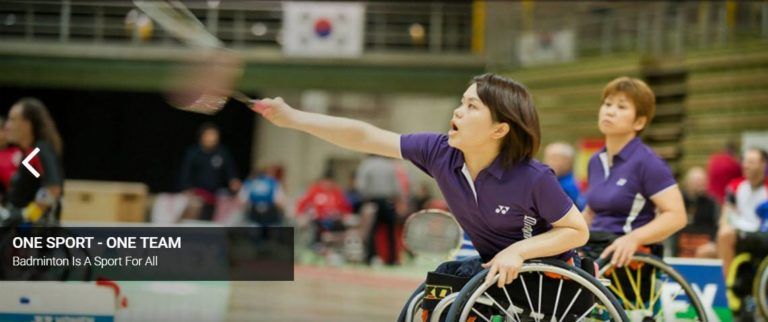 Badminton will make its Paralympic debut at the Tokyo, Japan 2020 Paralympic Games. The International Paralympic Committee (IPC) ( www.paralympic.org/) announced the addition of this sport that’s played on an indoor court to the Paralympic program in October, 2014, with single, double and mixed events offered. Para-Badminton is played according to the laws and regulations of the Badminton World Federation ( bwfbadminton.org/ with allowances made for certain classifications. The U.S. Paralympic Badminton Team and the day-to-day operations are overseen by USA Para-Badminton (www.teamusa.org/usa-badminton/para, a Paralympic organization within USA Badminton.
Badminton will make its Paralympic debut at the Tokyo, Japan 2020 Paralympic Games. The International Paralympic Committee (IPC) ( www.paralympic.org/) announced the addition of this sport that’s played on an indoor court to the Paralympic program in October, 2014, with single, double and mixed events offered. Para-Badminton is played according to the laws and regulations of the Badminton World Federation ( bwfbadminton.org/ with allowances made for certain classifications. The U.S. Paralympic Badminton Team and the day-to-day operations are overseen by USA Para-Badminton (www.teamusa.org/usa-badminton/para, a Paralympic organization within USA Badminton.
Badminton is one of the most televised, most promoted sports in most of the world, but in the United States, this sport receives little publicity and little or no TV coverage. That’s why we’re sharing it with the Cure Nation!
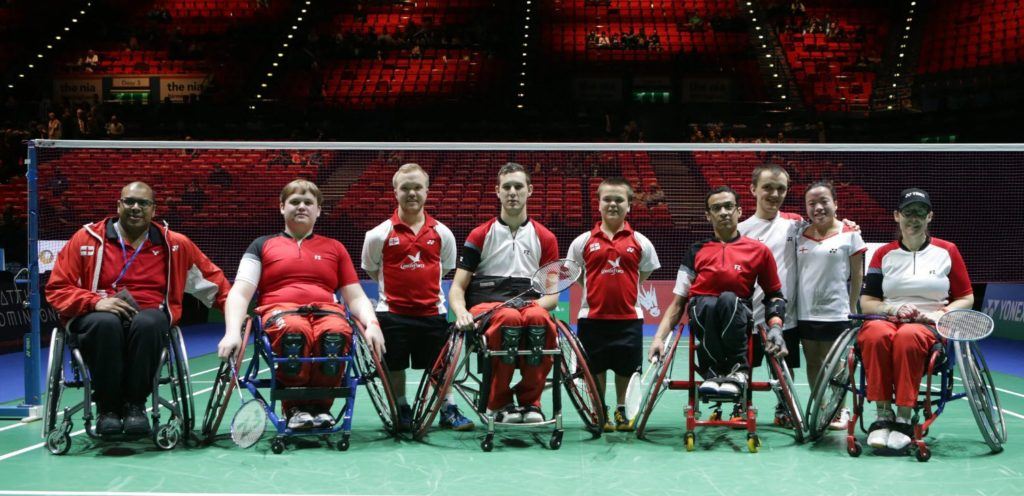
To provide more sports for more people with disabilities and to get more publicity for Paralympic sports, the International Olympic Committee (IOC) began in 2014 to encourage more countries to recruit and train Para-Badminton athletes. At this writing, the first two USA members were found and performed outstandingly in their first international competition.
A press release by USA Badminton gave the details: “IV Pan Am Para-Badminton Championships 2016 – Team USA Para-Badminton made its first appearance at the Pan Am Para-Badminton Championships in Colombia.
Gold medalists Miles Krajewski and Danh Trang took the Men’s Short Stature doubles by winning 3 matches without a loss to top the field.
Sixty one athletes from nine countries, including Canada, United States, Guatemala, Suriname, Cuba, Peru, Brazil, Chile and host Colombia, had athletes contesting in six Para-Badminton classifications.
“In a surprise win, Miles Krajewski ascended the podium to his second gold as he wonthe Men’s Short Stature Singles. His father, Mike Krajewski, acting as coach and manager for Team USA, commented, ‘Miles performs well under pressure’- a mild description of someone who pulled out nail biting semi-finals against Brazil’s Dhiego Guimaraes and then defeated Peru’s Hector Salva Tunque in the finals.
Adaptive Badminton matches can be viewed on YouTube:
What the Para-Badminton Olympians Say
“It was an honor and a privilege representing the U.S. This definitely wouldn’t have been possible without USA Badminton and the various coaches/players who had helped along the way. I hope that this encourages even more athletes, coaches and sponsors to become involved in the growing USA Para-Badminton program,” Danh Trang says.
“I feel very lucky to be part of the first USA Para-Badminton team to compete in the Pan Am Para-Badminton Championships…. The competition was tough, and the victories weren’t easy, but more important than the victories, I’ve made a lot of new friends,” Miles Krajewski adds.
“I also want to thank USA Para-Badminton for all of the help they’ve provided. I also appreciate the commitment they’re making to increase participation and awareness of this great program,” Krajewsk says. “I am very proud that we were able to bring home the gold for the U.S.!”
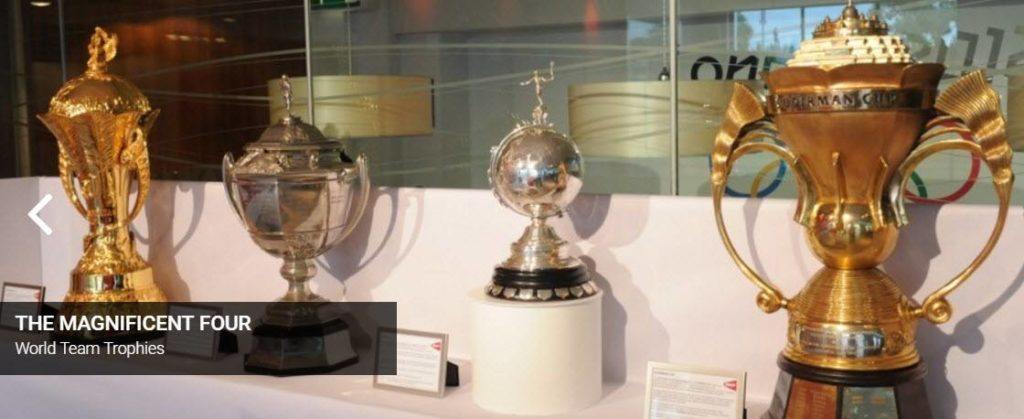
“USA Badminton is so proud of how Miles and Danh played in their matches at the Para Pan Am event in Colombia in December, 2016. Thanks to the USOC, USA Badminton and all the coaches for helping these athletes achieve their success. Our program is in a beginning stage of identifying athletes and getting prepared for the 2020 Paralympics, and this gold medal performance is a fantastic start for Para-Badminton in the USA,” Steve Kearney, Director of Para-Badminton for USA Badminton says.
What’s the Word from the Top about Adaptive Badminton
Steve Kearney first started playing badminton when he was 12 years old after winning a ping pong championship in the seventh grade. “My ping pong coach invited me to play badminton at his house after school, where I beat the youngster who was the school badminton champ. A gym was set-up for badminton here in Palo Alto, California, and I started playing badminton competitively. Next I tried out for the U.S. badminton team and played in some international tournaments. I was ranked #2 in doubles and #25 in singles in the 1970s and won the collegiate national championship,” Kearney explains.
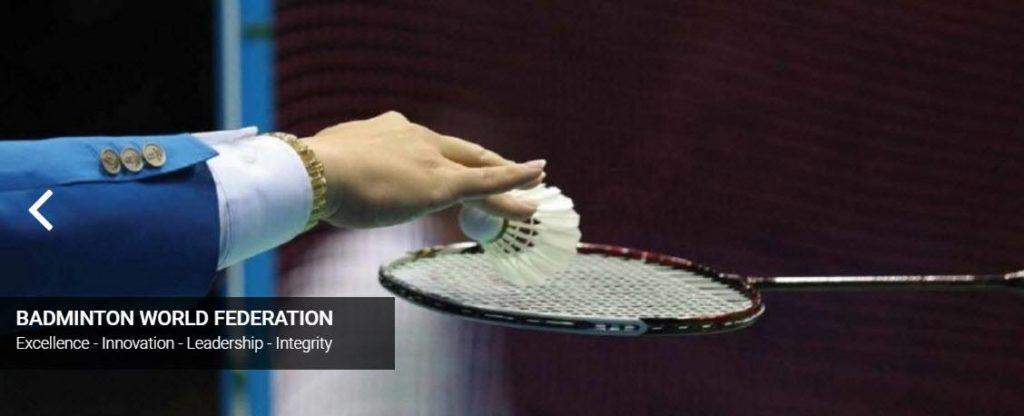
Steve’s son, Daniel, was born without a tibia bone in 1986 and had a below the knee prosthesis since he was 11 months old. He got into Paralympic swimming at a very young age, swam in high school and tried out for the Paralympic swimming team. “Daniel only had a slight interest in badminton during those days,” Kearney says.
When the Olympics came to Atlanta, Kearney was asked to be in charge of the 1996 Olympic badminton games.
“At that time, there were about 14 countries that competed in Para-Badminton, and they held world championships. The international Para-Badminton committee has been making a big push to get into the Paralympic games since 2004. Para-Badminton gained access to compete in the Paralympics in October, 2014.
Para-Badminton Classifications
“Every sport in Paralympics is divided into certain classifications. Para-Badminton has six classifications:
- wheelchair,
- standing classifications,
- below-the-knee prosthesis,
- above-the-knee prosthesis,
- below-the-waist prosthesis and
- dwarfs.
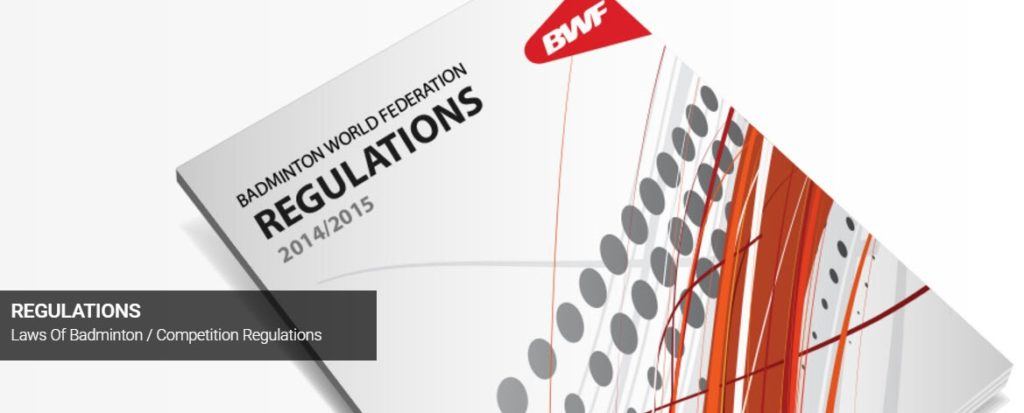
Internationally, the individuals we call ‘little people’ are classified as dwarfs. We’re attempting to find athletes for these six categories to compete in the 2020 Paralympic Games. Currently, we have 14 Para-Badminton coaches, who aren’t fulltime, paid coaches. These coaches play in clubs or at other places. If we can find Para-Athletes who fit one of these six categories, these coaches will train them. We also are putting on badminton events and inviting Para-Athletes to come to these events. We believe that we can put together a team of Para-Badminton athletes in time for the 2020 Olympic games.”
Kearney and his committee have been working with veterans’ associations, doing clinics at veterans’ hospitals and inviting their athletes to come out and try badminton, as well as contacting the members of the Little People of America (LPA) www.lpaonline.org and the World Dwarf Games ( worlddwarfgames2017.org/about/).
“We’ve found a tennis player who is now recruiting other tennis players to compete in Para-Badminton. One of the advantages of starting to compete in Para-Badminton is that we don’t have an already established team, which makes the odds of getting into the Paralympics somewhat better than sports with established teams and numbers of seasoned athletes competing for places on those teams. By September, 2017, the IOC will let each country know how many athletes it can bring to the 2020 Paralympic Games.”
Today, 82 countries from around the world are competing in the Paralympic Games, and more than 200 are competing in the Olympic Games.
Interest in Paralympics and the sport of badminton continues to grow worldwide. Currently, athletes must get qualifying points to compete in the Paralympics. At least one tournament for Para-Badminton will be held in the U.S. “We hope to see a USA Para-Badminton team develop out of that first tournament,” Kearney reports.
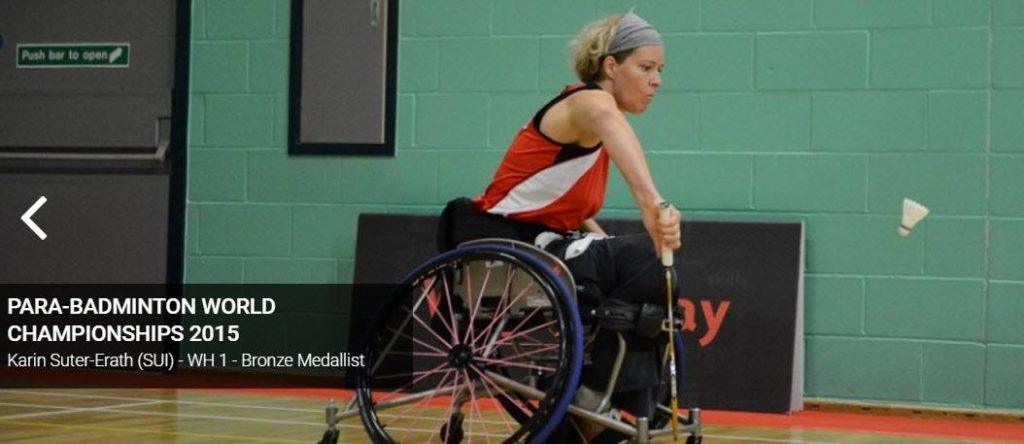
What’s the History and the Future of Para-Badminton
In the 1950s, the USA had one of the top badminton teams in the world. Then China came on strong and in the 1970s dominated the sport. One of the reasons that badminton was so popular in Europe too was because the International Badminton Federation offices were in England. But the production of shuttlecocks (the feathered objects hit back and forth across the net with the badminton racket) is primarily in Asia where the sport is very popular. As the sport of badminton declined in England, the International Badminton Federation was moved to Malaysia, and its name was changed to the Badminton World Federation (bwfbadminton.org/) about 20 years ago. Most of the TV coverage for the sport now comes from Asia and Europe, with the U.S. having almost no coverage.
Europe has more social programs for people with disabilities, focused around institutions. In the United Kingdom, the Para-Badminton program was funded partially by the state for about 10 to 12 years. Now the program is the England Badminton Players Association for Disabled (www.ebad.org.uk/). When the Paralympic games first started, they were primarily outdoor games like rugby, road racing, track and field and basketball. However, individual sports took many more resources than team sports. Possibly the Paralympic games wanted to offer more sports for more people all over the world, particularly the Asian population, to participate in after already introducing table tennis.
Why Badminton Is Being Added as a Paralympic Sport
Abigail Bautista is currently a director on the board of directors of USA Para-Badminton and the occupies the coaching chair seat. “When Steve Kearney accepted the position of being the director of the USA Para-Badminton Association, I told him that my interest was to go into the Para-Badminton world with my background in physical therapy to help organize and find coaches and athletes to train for Para-Badminton teams,” Bautista says. “In the last Olympics in London, badminton was one of the most watched sports worldwide and had the second most participants worldwide, with soccer in first place. Also badminton is an indoor sport that can be played year round.
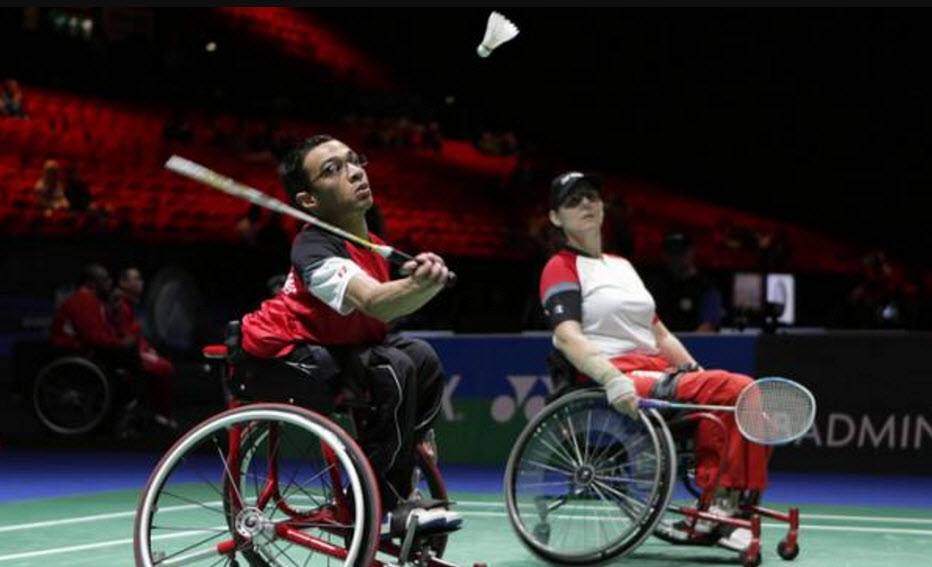
“The IOC added Paralympic badminton in 2014, but we didn’t get USA Para-Badminton off the ground until 2015. We tried to get the word out to everyone in the community of disabled people about this new sport for them. We also promoted and let everyone who had badminton facilities know about this new sport of Para-Badminton. This sport is so new that we don’t know what qualifications an athlete will need to qualify for an Olympic team.”
Another problem is that USA Para-Badminton doesn’t know of any teams formed to compete in Para-Badminton. The group did find a team of two and sent them to the Irish Internationals in June, 2016, and to the Pan American Championships. Both people were both short of stature and only had been playing badminton a short time. Ten year old Miles Krajewski, who had participated in the Dwarf Games of America, went after seeing his first badminton game at age 7 and competing when 8 in the 2013 World Dwarf Games. In the IV Pan Am Para-Badminton Championships in 2016, Miles won a gold medal in the singles division and then partnered with an adult, Dahn Trang, to win a gold medal in the doubles event.
“Steve Kearney’s son, Daniel, had participated in Paralympic sports for some time, and Steve agreed to come on as one of our directors for USA Para-Badminton,” Bautista explains. “Badminton has been considered a recreational sport in the United States and hasn’t been a competitive sport, which is part of the problem. I went to a wheelchair tennis match a few days ago and talked to some of the players about participating in wheelchair badminton. Both said, ‘Yeah, we’d like to try it.’ We’re telling coaches and athletes to consider becoming competitive in badminton, because the U.S. doesn’t have very many Para-Badminton athletes to send to international competitions to prepare for the Paralympics in 2020.”
 Besides making presentations to the Wounded Warrior Foundation, VA hospitals and other rehab hospitals about starting badminton teams, USA Para-Badminton has made presentations at the Abilities Expos ( www.abilities.com/expos/) too. The group has set-up demonstrations of Para-Badminton all over the country to introduce people with disabilities to the sport, besides actively recruiting Paralympic athletes to participate in the sport of badminton.
Besides making presentations to the Wounded Warrior Foundation, VA hospitals and other rehab hospitals about starting badminton teams, USA Para-Badminton has made presentations at the Abilities Expos ( www.abilities.com/expos/) too. The group has set-up demonstrations of Para-Badminton all over the country to introduce people with disabilities to the sport, besides actively recruiting Paralympic athletes to participate in the sport of badminton.
How You Can Get Involved with Adaptive Badminton
Email Steve Kearney at steve@usabadminton.org or Abigail Bautista, who heads up the coaching chair, at abihobbes2010@gmail.com, and they’ll try to help you find a coach to learn the sport, begin to train and get ready for competition. “We’re hoping to help people with disabilities fulfill their dreams of being Paralympians through the sport of Para-Badminton,” Kearney explains.
Enjoy Our Free Resources & Articles
 CURE NATION is designed with you in mind, to offer assistance and education when you need it through a personal support program.
CURE NATION is designed with you in mind, to offer assistance and education when you need it through a personal support program.
All of the information you find below and on our related social media pages is meant to guide you to places, topics and, resources that enhance your life, while also connecting you with a growing group of friends.
- Sign up for our free, CURE NATION e-newsletter to have our latest stories delivered directly to you, once a month.
- Get our FREE LIFESTYLE + TRAVEL BOOKS here.
- Have an idea you’d like to share? Let us know.
- Be sure to take a minute to meet our Cure Advocates too.

